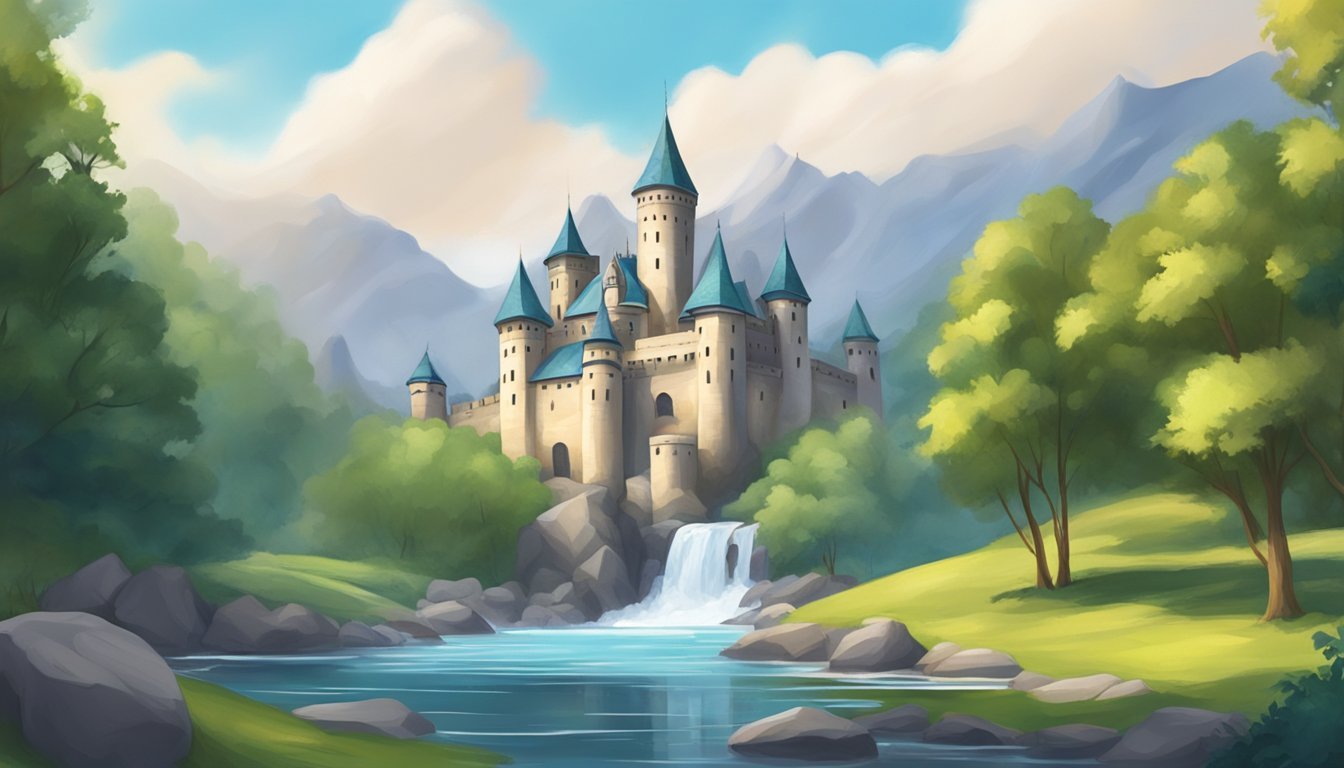Bai vs. Castle Rock
Which Bottled Water is Better? Comprehensive Comparison and Analysis
Choosing the right bottled water can be as nuanced as selecting a fine wine. Two brands often debated are Bai and Castle Rock, each offering distinct benefits. Bai is known for its antioxidant-infused beverages, leveraging the coffee fruit to deliver hydration with a health boost.
Castle Rock, on the other hand, prides itself on being sourced from the pristine springs of Mount Shasta in California, offering a pure, untouched water experience. When comparing these two, Bai stands out for those seeking not just hydration but an added nutritional advantage, while Castle Rock appeals to purists who prioritize natural spring sources.
Both brands have carved a niche within the competitive bottled water market, making the choice between them a matter of individual needs and preferences. Whether focusing on health benefits or purity, understanding the unique offerings of Bai and Castle Rock helps make an informed decision.
Understanding Bottled Water
Bottled water is a highly popular choice for consumers seeking convenience and perceived purity. Various brands and types cater to different preferences, highlighting distinctions in source, mineral content, and overall quality.
Defining Bottled Water
Bottled water is water that is packaged in bottles for consumer consumption. It can come from a variety of sources such as natural springs, wells, or be purified from tap water. The EPA (Environmental Protection Agency) regulates the quality of bottled water to ensure safety.
Types of bottled water include spring water, which originates from underground formations, and purified water, which has been processed to remove impurities. The mineral content and pH levels can vary, with some brands offering alkaline water for its reputed health benefits.
Bottled Water Brands Landscape
The bottled water market features a diverse array of brands, each promoting unique qualities. Poland Spring emphasizes its 100% natural spring water from Maine, while Bai offers antioxidant-infused, flavored options. Castle Rock is known for its natural spring water sourced from remote locations, with a focus on eco-friendly practices.
Brands differ not only in source but in composition. Minerals and electrolytes in these waters can enhance taste and potential health benefits. Brand accessibility, availability in different regions, and price points also influence consumer choices. Packaging innovations and sustainability efforts are becoming increasingly important considerations.
Types of Bottled Water
Spring water and purified water are the most common types. Spring water is sourced from natural springs and typically contains natural minerals. It is often preferred for its taste and perceived health benefits. Purified water undergoes extensive filtration processes such as reverse osmosis to remove impurities and is mostly sourced from municipal supplies.
Mineral water naturally contains various minerals and must come from a geologically protected source. Alkaline water has a pH level higher than standard drinking water, believed to neutralize acid in the body. Comparison metrics for these types often include source purity, mineral content, and pH level, all of which influence consumer preferences.
Through these lenses, the bottled water industry presents a complex landscape where consumers can find products that meet specific personal health and lifestyle needs.
Health and Hydration
Bai and Castle Rock bottled waters each offer distinct health and hydration benefits. This comparison examines their nutritional content, hydration effectiveness, and pH levels.
Nutritional Content and Health Benefits
Bai Water:
Calories: Low-calorie, with only 10 calories per bottle.
Sweeteners: Free from artificial sweeteners, contains 1 gram of sugar.
Antioxidants: Contains antioxidants from coffee fruit extract and tea extract.
Vitamins: Includes vitamin C, beneficial for immune support.
Castle Rock Water:
Calories: Zero calories per bottle.
Sweeteners: Contains no sweeteners or sugars.
Minerals: Rich in natural minerals like calcium, magnesium, and potassium.
Fluoride: Fluoride content promotes dental health.
Hydration and Electrolytes
Bai Water:
Hydration: Provides effective hydration with a refreshing taste.
Electrolytes: Contains essential electrolytes that aid in maintaining proper hydration.
Key Electrolytes: Magnesium and potassium.
Castle Rock Water:
Hydration: Known for its hydrating properties due to high mineral content.
Electrolytes: Naturally infused with electrolytes from its source.
Key Electrolytes: Calcium, magnesium, and potassium.
Understanding pH in Drinking Water
Bai Water:
pH Level: Slightly acidic to neutral depending on the flavor and variant.
Health Considerations: Designed to complement its antioxidant properties.
Castle Rock Water:
pH Level: Typically has a neutral to slightly alkaline pH.
Health Considerations: Supports maintaining the body's natural pH balance and promoting digestive health.
Bai water emphasizes antioxidants and low calories, enhanced by slight acidity in its pH. Castle Rock offers natural mineral content, zero calories, and a neutral to alkaline pH for balanced hydration. Each brand brings unique attributes catering to different health priorities and preferences.
Bai Water Specifics
Bai Water offers a unique approach with its antioxidant-infused, flavored water. By focusing on a mix of natural and health-conscious ingredients, it aims to provide a refreshing and beneficial beverage choice.
Origin and Source
Bai Water sources its key antioxidant ingredient from coffee fruit extract, a byproduct of coffee production. This choice leverages the nutrient-dense properties of the coffee fruit, known for high levels of polyphenols.
The water itself is purified and combined with natural flavors, creating a distinctive beverage profile. Bai Water distinguishes itself from conventional bottled waters by emphasizing health benefits derived from its unique source and processing methods.
Ingredient Profile
Bai Water is notable for its low calorie content, with each bottle containing only 10 calories. It uses a blend of natural sweeteners like erythritol and stevia leaf extract, which avoids the use of added sugar. Each serving contains just 1 gram of sugar, making it a suitable option for those monitoring sugar intake.
Additionally, Bai includes extracts from tea and coffee fruit, providing antioxidants that support overall well-being. These ingredients also contribute to the beverage’s array of natural flavors without artificial additives. The product is gluten-free, vegan, and crafted to cater to health-conscious consumers, ensuring a broad appeal among various dietary preferences.
Castle Rock Water Overview
Castle Rock Water is known for its pristine natural spring source, superior taste, and commitment to sustainability. This section explores its origin, quality, and environmental efforts.
Sourcing and Purity
Castle Rock Water is sourced from the springs of Mount Shasta in Dunsmuir, California. The water naturally percolates through layers of granite, gem-infused rock, and volcanic lava tubes. This geological process ensures a unique purity as it filters out impurities and infuses the water with naturally occurring minerals.
The journey from ocean to rain, glacier to spring, provides Castle Rock Water with its signature purity. Each bottle contains water that has completed a complex natural purification cycle, closely mimicking nature's filtration system. This commitment to purity distinguishes Castle Rock Water in the crowded bottled water market.
Taste and Quality
Castle Rock Water's taste stands out due to its natural purification process and mineral content. The slow percolation through diverse geological formations results in a crisp, clean taste that many consumers describe as refreshing and vibrant. Unlike tap water, which often carries chemical additives, Castle Rock Water offers a pure drinking experience.
In customer reviews, the absence of chlorine or artificial additives is often highlighted. People notice the difference, emphasizing the natural and unaltered flavor of Castle Rock Water. Every sip reflects the brand's dedication to delivering high-quality, natural spring water.
Environmental Commitments
Castle Rock Water is committed to sustainability and environmental protection. The water is bottled in eco-friendly glass bottles, minimizing the impact on the environment compared to traditional plastic bottles. This choice aligns with their aim to reduce plastic waste and promote recycling.
In addition to using sustainable packaging, Castle Rock Water participates in initiatives to preserve its natural source and surrounding ecosystem. Their practices ensure that the extraction processes do not deplete or harm the water supply. Choosing Castle Rock Water supports environmental sustainability and responsible resource management.
Comparison and Contrast
Bai and Castle Rock are two distinctive bottled water brands, each with unique attributes. This section examines their taste profiles, health implications, environmental impact, and packaging.
Taste Profile Analysis
Bai's water offers a flavored experience, infused with antioxidants. The addition of alkaline minerals provides a unique taste with a pH of 7.5. Flavors range from fruity to botanical, making it appealing for those seeking more than plain hydration.
Castle Rock, sourced from a natural spring, is non-flavored and emphasizes purity. The water is characterized by a clean, crisp taste, with minimal mineral content. This natural taste is ideal for individuals who prefer their water unaltered by additives.
Health Implications
Bai includes selenium, an antioxidant with potential health benefits like heart disease prevention and immune system support. The alkaline nature of Bai’s water also aims to balance the body's pH level, which some believe can enhance overall wellness.
Castle Rock focuses on natural spring water, free from artificial additives. It offers hydration without the additional nutrients present in Bai’s water. For those prioritizing pure, unaltered water, Castle Rock presents a healthier choice due to its minimal processing.
Environmental and Sustainability Factors
Bai's environmental initiatives include using recyclable plastic bottles. However, plastic remains a controversial material due to its environmental impact. Bai's production process also includes adding minerals, which involves more processing steps.
Castle Rock boasts eco-friendly practices, offering glass bottle options that are easily recyclable and have a reduced environmental footprint. Their sourcing practices emphasize sustainability, minimizing the ecological impact by maintaining the natural integrity of their water sources.
Packaging and Brand Image
Bai's brand image hinges on modern, stylish packaging and its association with antioxidant benefits. Bottles are sleek, often featuring vibrant colors that appeal to health-conscious consumers seeking a flavored, beneficial beverage.
Castle Rock’s packaging is more traditional and environmentally conscious. The use of glass bottles aligns with its pure, natural image. This appeals to consumers prioritizing sustainability and purity, reflecting a commitment to reducing plastic use.
Both brands have distinct strengths, catering to different consumer preferences in taste, health benefits, environmental impact, and packaging.
Consumer Considerations
When choosing between Bai and Castle Rock bottled water, factors such as price, availability, water source transparency, and overall market presence significantly influence consumer decisions.
Price and Availability
Price and availability are critical factors for consumers. Bai is widely accessible in both physical stores and online platforms like Amazon. This availability ensures that customers can easily purchase Bai without undue effort.
Castle Rock is often found in specialty stores and specific online retailers. While not as ubiquitous as Bai, it remains accessible to health-conscious consumers. Prices can vary, but Castle Rock often positions itself in the premium segment. Consumers valuing convenience may find Bai more appealing, whereas those seeking quality might lean toward Castle Rock despite a potential price difference.
Water Source Transparency
Transparency about the water source informs consumer trust. Bai sources its water from municipal supplies, enhancing it with antioxidants derived from coffee fruit extract and other natural flavors.
Castle Rock emphasizes its natural spring water origin from the pristine properties of Mount Shasta, California. They provide detailed information about the source and purity. For consumers, Castle Rock's clear disclosure of its origin may offer additional peace of mind over Bai's more generalized sourcing, depending on individual preferences for natural spring water versus enhanced beverages.
Market Presence and Consumer Trust
Market presence and consumer trust significantly impact purchasing decisions. Bai, with its diverse product range and strong marketing strategies, enjoys a robust market presence. Its flavored water variants and antioxidant claims have captivated a broad audience.
Castle Rock, while more niche, has carved out a loyal customer base appreciative of its commitment to sustainable sourcing and environmental stewardship. Consumer trust in Castle Rock hinges on its dedication to transparency and quality, whereas Bai's appeal lies in its broader availability and variety. Both brands have established trust but cater to different consumer priorities and values.
The Verdict
Bai and Castle Rock offer distinct advantages in the bottled water market, making it essential for consumers to understand their unique benefits.
When considering health and hydration, Bai provides added antioxidants from coffee fruit extract and vitamin C while maintaining low calorie and sugar levels (1g sugar, 10 calories). Castle Rock, on the other hand, offers pristine spring water sourced directly from mineral-rich mountain springs, ensuring natural mineral intake.
In terms of taste, Bai's slight hint of natural sweetness may appeal to those who enjoy flavored water. Castle Rock is preferred by those who favor a crisp, clean taste with no aftertaste, often described as tasting nothing like plastic.
Regarding sustainability, Castle Rock prioritizes eco-friendly practices, including using recyclable bottles and supporting water conservation projects. Bai, too, has eco-conscious packaging but emphasizes its antioxidant-infused water's health benefits more than its sustainability efforts.
Brands play a crucial role in consumer preference. Bai is often recognized for its health-oriented product line, including its antioxidant-rich beverages. Castle Rock is noted for its commitment to purity and environmental stewardship, appealing to consumers valuing natural and sustainable products.
While both brands meet hydration needs, individual preferences for added health benefits, taste, and sustainability efforts will guide consumer choices.




